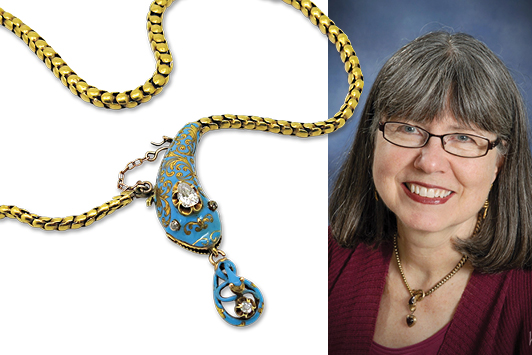 How does selling estate jewelry fit into the concept of the circular economy?
How does selling estate jewelry fit into the concept of the circular economy?
“Circular economy” means materials are reused, repurposed or transformed in manufacturing. These materials are recycled and don’t get thrown away. There are different ways that this is accomplished in jewelry. For antique and vintage enthusiasts, a piece or pieces will be transferred to different owners, reducing the use of new gems and metals and becoming part of the “economy.”
We recycle by offering pieces in their original condition. Environmentally and aesthetically, we get the most benefit by returning something that is already made to the market and finding a new owner for it. Then we don’t have the cost of manufacturing a new piece, nor is it recently mined. There is no new design and no manufacturing. This process reintroduces the item to fresh buyers or a brand new market, which is perhaps the most effective way of dealing with antique and vintage or pre-worn jewelry. Even when we scrap or melt down settings and use the stones, very little metal gets lost in the process. This is another way we can have a positive impact on sustainability.
Are collectors coming to you because they see vintage jewels as more sustainable?
Yes, definitely. This is particularly true with couples who are getting engaged. They are looking for the best of two worlds. They desire the charm and beauty of authentic antique rings from the late 19th century through the early 20th century, and are seeking out rings that are unique, imbued with character, created with old-world techniques and set with old cuts of diamonds. Equally important to them is the sustainability of purchasing a ring from the past. They prefer a ring that is not part of a new mining process. Many of the younger couples, those getting engaged for the first time, are very aware and will only purchase items that adhere to eco-friendly practices. When it comes to their jewelry, it is imperative to them that it is environmentally and socially conscious.
Are there certain pieces from the past that are given new life while retaining their sustainability?
For the first 20 years I was dealing with antique and vintage jewelry, collectors wanted pieces that were not modified or adapted in any way. One of the first questions I was asked was, “Is it in its original condition?” However, approximately 15 years ago, whatever wasn’t melted down for gold came out of the safes of antique sellers. Pieces that weren’t fashionable or worn for a long time, like stick pins and small brooches, started to be redesigned into more wearable pendants and necklaces. [This practice] created a new market known as “conversion jewelry.” We have also seen and continue to see the reusing of watch fob chains — as necklaces if they are long enough, or bracelets that can be wrapped around the wrist twice. Signet rings, if you can find your initials or those without initials ever engraved into them, are another area of the market that has reappeared and come out of hiding. Contemporary customers find signets to be stylish and wearable options in jewelry, adding another classification to the resale of pre-owned pieces. Additionally, somewhere in time, certain necklaces were broken down into earrings if they were designed with dangling pendants — although many earrings are passed along to the next customer in their authentic forms.
How can dealers share the responsible-sourcing story with their clients?
There are so many ways to get the message out there today — in Instagram posts and stories, on IGTV, in newsletters that dealers and stores already send their clients. They can also use their websites for taglines, blogs, [and other ways of sharing information about] our sustainability program or how jewelry fits into the circular economy. They should also make sure it is part of every sales presentation to the consumer, to let [clients] know they are doing their part as socially conscious jewelry collectors who want to purchase a beautiful piece of jewelry, and one that is equally valuable in protecting the safety of our environment and the people working in this industry.
What makes a piece of estate jewelry a more conscientious luxury option? Might this be a form of greenwashing, since these older metals and gemstones weren’t monitored in the past and may have come from problematic sources?
I don’t think you need to deny that there were issues in the past. I think by reusing existing jewelry, you avoid historically less-than-perfect mining policies, and you are not putting new money there. Therefore, we are doing our best not to repeat the mistakes of the past. I fully support vetted, ethically sourced gold, which in turn supports human rights and a healthier working and living situation.
When you resell, reuse, reimagine or repurpose jewelry, you can feel good about what you are selling. You are supporting pieces that have withstood the test of time and multiple generations of wearers, [and] which will continue on to new consumers. Even if you are using the recycled, melted-down gold and diamonds or other gemstones from those pieces, it will all be worn again in some form of the original piece. I remember in the mid-20th century and in the 1970s, gold was cheaper, yet heavier — which means if you are purchasing those vintage looks, you get the advantage of a more solid piece of jewelry, as well as the style that is so popular today, at a more affordable price than you would pay for new pieces. This jewelry is difficult to duplicate today due to the cost of labor and gold. It’s a win-win situation — who wouldn’t want to wear jewelry that is unique and ethical at the same time?
Article from the Rapaport Magazine - August 2021. To subscribe click here.